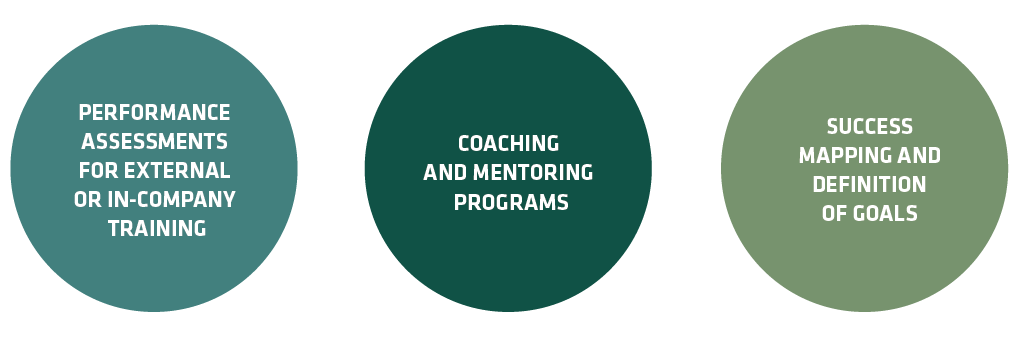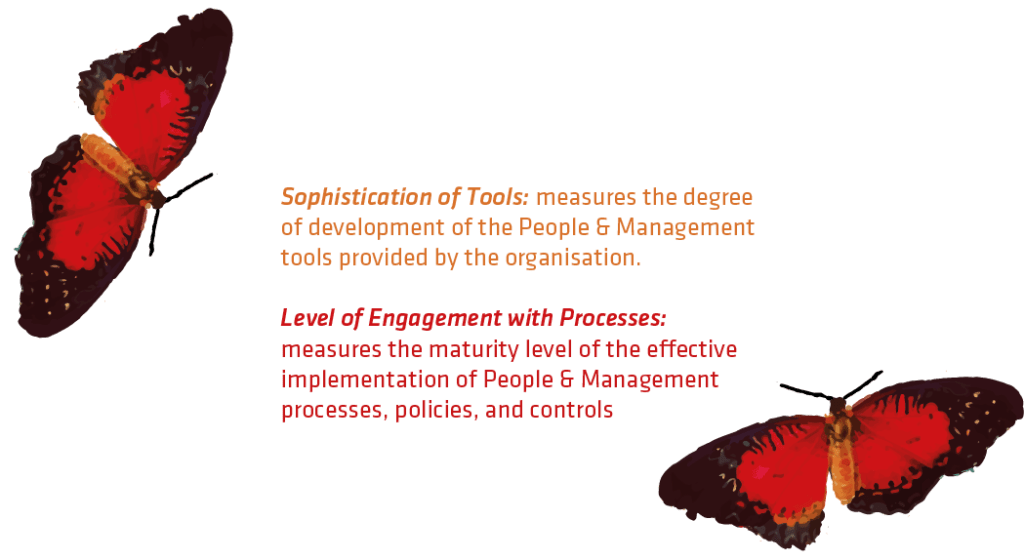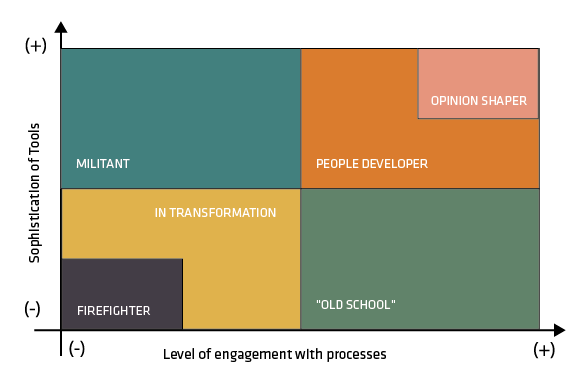The importance of evaluating the levels of maturity in the area of People & Management when advancing the HR model


Over the past 60 years, strategic planning at companies has undergone a series of transformations. From the 1960s to the mid-1980s, companies have focused their efforts on products, assets, and services. By the end of the 1980s, this was no longer enough to guarantee competitiveness, prompting companies to invest in the redesign of their processes, organisational structures, and information systems. Starting in 2000, talent management was viewed as a key pillar for the organisation’s performance. This was when the skill of attracting, recruiting, and retaining talents became a critical competitive differential at companies.To follow these transformations, the role of People Management has changed, now assuming a leading position in business strategy. One common mistake in the corporate world for example, is implementing People Management tools that are not aligned with the maturity of the company’s People & Management department. Therefore, it is crucial to define which tools apply for each business. Many tools can be used, including:


Several different organisations have sought to implement many of these tools, prompted by the transformations and works to improve their results. However, doing it only because it is a good practice and failing to involve the leadership does not encourage employee engagement.
How mature is my company in the People & Management area?
Based on these challenges, a People & Management maturity analysis model was developed to diagnose the company’s current scenario to come up with an organisation’s development plan.
The model evaluates two dimensions:


Eight categories are analysed in each dimension: Identification of the Company, Management Model, Leadership, Culture & Engagement, Strategic Incentives, Meritocracy, People’s Readiness, and People Analytics.
Learn more: the eight categories used in management model evaluation
– Identification of the Company: The pillar is designed to evaluate the structuring of People & Management, its centralisation and outsourcing of its Processes. One sign of maturity is the measurement of People & Management indicators, such as: turnover, voluntary dismissal, talent mapping, % of talents, and voluntary talent dismissal.
– Management Model: Considers the scope of strategic planning, headed by People & Management, permeating factors like profitability, cash flow and longevity, support of the organisation’s continued survival. This implementation will include the structuring and development of goals. Furthermore, this pillar is based on: the existence of policies, procedures, mapped processes, continuous improvement methodologies, and indicators.
– Leadership: The leadership pillar is associated with the main role played by leaders in People & Management processes and the dissemination of culture for the development of new leaders.
– Culture & Engagement: How close workers feel to the company, how they view, live, and share the values proposed by the leaders. A common measurement method is the application of an employee engagement survey.
– Strategic Incentives: Besides the financial incentive, it is crucial that the organisation has a purpose that enchants and engages its employees. This dimension also includes the evaluation of which long-term financial incentives, aligning the employee’s individual perspective with the company’s vision of continued survival.
– Meritocracy: It is one of the main points of leverage of the People & Management model, comparing employee recognition, promotions and adjustments to the cultural fit by assessing performance and mapping successors.
– People’s Readiness: This is how the organisation prepares to attract qualified people with the right profile and constantly develop its employees, creating the “pipeline of people.” Organisations should always seek professionals who are prepared to achieve excellent, lasting results.
– People Analytics: Should facilitate data analysis within the organisation with aims of understanding and anticipating behaviours, thereby contributing toward decision-making.
The result is discussed in the matrix that cross-references the maturity level in Engagement Level with Processes vs. Tool Sophistication. This cross-referencing is used to create six quadrants that reflect the main characteristics of People & Management.
Maturity Level Matrix of the People & Management Area


- Firefighter: During this stage, the People & Management tools and processes are not standardised at the organisation, or it may not even exist. Decisions about the topic are made on demand and in an ad hoc fashion. There is no dedicated People & Management department and People Management is restricted to the Personnel Department.
- In Transformation: The organisation is already familiar with its deficiencies in People & Management and is seeking ways to adjust to the new tools and methodologies while improving its processes.
- “Old School:” The processes are well-defined at this level, with a high degree of control, but is at an extremely low level of sophistication in terms of the tools being used.
- Militant: The People & Management area gains access to excellent tools and knowledge of best market practices. They try to implement these, but is still not part of the company’s daily routine. The leader does not see him/herself as playing a main role in the process.
- People Developer: The People & Management model is already able to develop its employees effectively, generating a “pipeline of people” to ensure the organisation’s longevity.
- Opinion Shaper: During this stage, the processes are already run in a state-of-the-art fashion, with the use of best market practices and pursuant to the company’s culture. The leader comes to assume a main role in the People & Management process and other companies want to copy it.
Once the diagnosis is completed, the companies will learn their maturity level in People & Management and the points they need to improve. This will allow them to design specific actions to advance their practices and processes. Starting at a familiar position on the matrix allows leaders to outline the right paths to become an opinion shaper.
About the authors
Natascha Moraes is a consultant at Visagio specialised in projects focused on Processes, Organizational Restructuring, Strategy, and Change Management, with a focus on People & Management in the pension fund, mining, telecommunications, energy, infrastructure, and bank sectors.
Tiago Miranda is a specialist in People & Management, Organisational Restructuring, Business Process Engineering, SSC implementation, Career & Succession, and Team Sizing in the oil & gas, mining, pension fund, investment fund, real estate, retail, automobile, education, and service sectors. He specialised in Finances at the COPPEAD Graduate Business School.
Thales Miranda is a partner at Visagio who worked as a consultant and Project and Quality Assurance Manager, focused primarily on Business Process Engineering, Organisational Restructuring, PMO, and HR Transformation Projects and working in sectors such as mining, infrastructure concession, oil & gas, and real estate, among others. He specialised in People Management at the ISE / IESE Business School.


